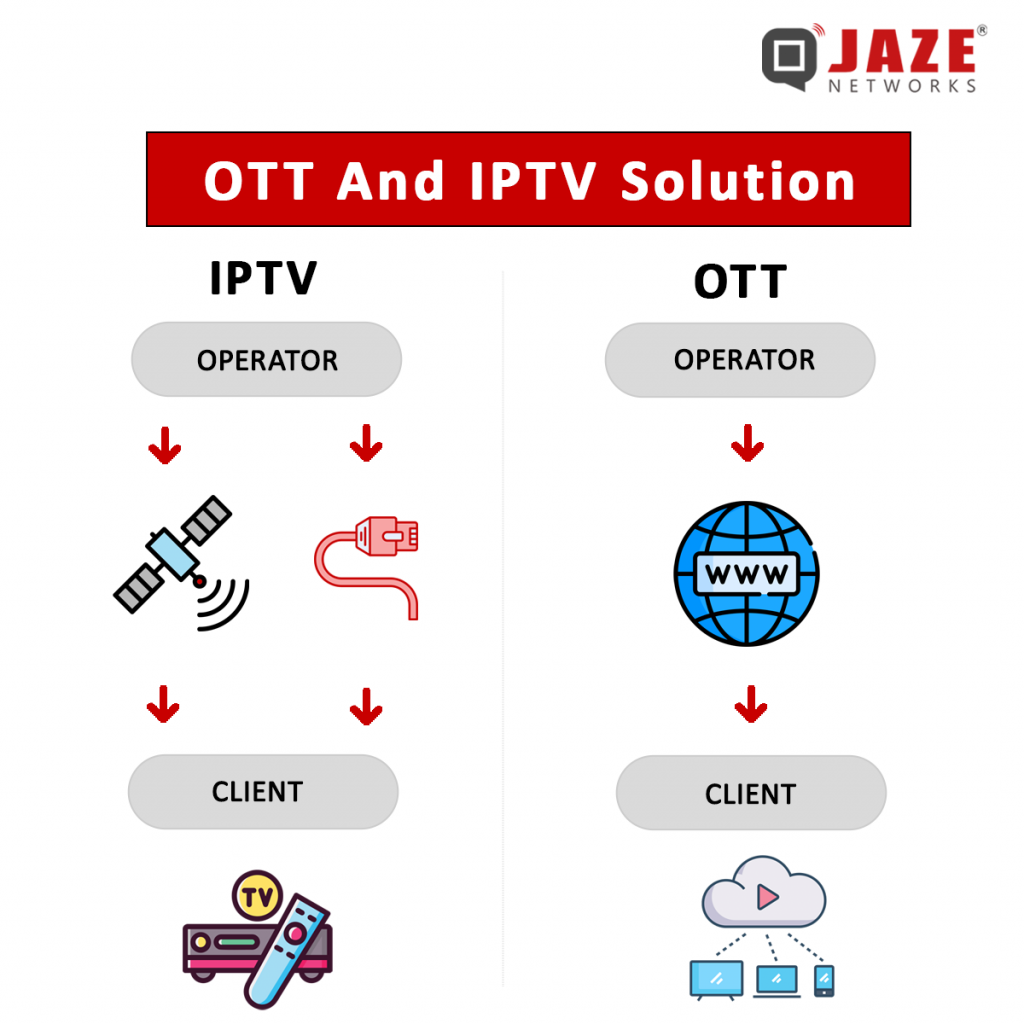




The landscape of entertainment consumption has dramatically transformed with the rise of video streaming, marking a significant shift from traditional broadcast TV to internet-based services.
As video streaming becomes increasingly popular, two key technologies have emerged: IPTV and OTT services.
According to recent data from Statista, the OTT video market is anticipated to reach approximately 6.4 billion users by 2029. Meanwhile, the global IPTV market was valued at USD 59.68 billion in 2022. But what are IPTV and OTT, and how do they differ?
Network Type: IPTV operates on a closed, managed network provided by Internet Service Providers (ISPs). This ensures a controlled environment for content delivery, leading to more stable and reliable streams.
OTT services utilize the open, public internet, making them accessible from anywhere with an internet connection.
Monetization Models: IPTV services are typically subscription-based and often bundled with other internet services provided by ISPs.
OTT services offer more flexible monetization options, including both subscription-based and ad-supported models. This variety allows OTT platforms to cater to different user preferences and budgets, providing more accessibility and choice.
Content Quality: IPTV is known for delivering high-quality, reliable streams due to its controlled network conditions. The managed network minimizes buffering and interruptions, ensuring a smooth viewing experience.
OTT content quality, however, can vary significantly based on the viewer’s internet speed and network congestion.
Accessibility: IPTV services are limited to the service provider’s network, often making them region-specific. This means that users can only access IPTV content within the geographical area covered by their ISP.
OTT services are globally accessible as long as there is an internet connection. This global reach allows users to access content from anywhere in the world, making OTT a more versatile option for international viewers.
Equipment: To access IPTV services, users typically need a set-top box and sometimes additional hardware. This equipment is necessary to decode the IPTV signal and deliver it to the TV.
OTT services are accessible on a wide range of devices without the need for special equipment. Users can stream OTT content on smartphones, tablets, smart TVs, and computers, providing greater convenience and flexibility.
Operational Costs: IPTV services incur higher operational costs due to the need for dedicated infrastructure and equipment. These costs are often passed on to consumers through higher subscription fees.
OTT services leverage existing internet infrastructure, resulting in lower operational costs.

IPTV, or Internet Protocol Television, delivers television content through a private, managed network. This means that the service provider controls the entire delivery process, ensuring a high-quality, reliable viewing experience. IPTV typically requires a subscription and a set-top box to decode the signal and deliver it to your TV.
Once the setup is complete, users can enjoy a wide range of TV programming over their internet connection. In essence, IPTV represents a shift towards a more flexible and efficient television experience, offering on-demand access to a diverse array of programming through a managed network.
OTT, or Over-The-Top, refers to content delivered over the public internet. Unlike IPTV, OTT does not require a managed network or a set-top box. Instead, it can be accessed on a wide range of devices, including smartphones, tablets, smart TVs, and computers. Popular OTT services include Netflix, Hulu, and Amazon Prime Video.
While both IPTV and OTT offer unique advantages, OTT services have become the preferred choice for many consumers and providers. The flexibility and lower cost of OTT platforms make them more appealing, especially in today’s mobile-first world where users value the ability to watch content on-the-go.
OTT services also stand out for their user-friendly nature. There’s no need for specialized equipment or installation—just an internet connection and a device. This ease of use, combined with a vast library of on-demand content, has contributed to the widespread adoption of OTT over IPTV.
Choosing between IPTV and OTT depends on your specific needs and preferences. IPTV might be ideal for those seeking high-quality, live streaming within a controlled network, especially for events like sports. However, for most users, OTT offers a more versatile and cost-effective solution, allowing access to a broad array of content across multiple devices.
With ISPs offering multiple services, managing billing and services for OTT and IPTV can be challenging. Jaze ISP Manager simplifies this process by integrating with top OTT and IPTV platforms and aggregators. It automates billing and efficiently manages OTT and IPTV services, including activation and deactivation. Additionally, Jaze ISP Manager integrates with leading BNG providers to help deliver differentiated policies, enhancing the Quality of Experience for the ISP’s subscribers. Click here to learn more.